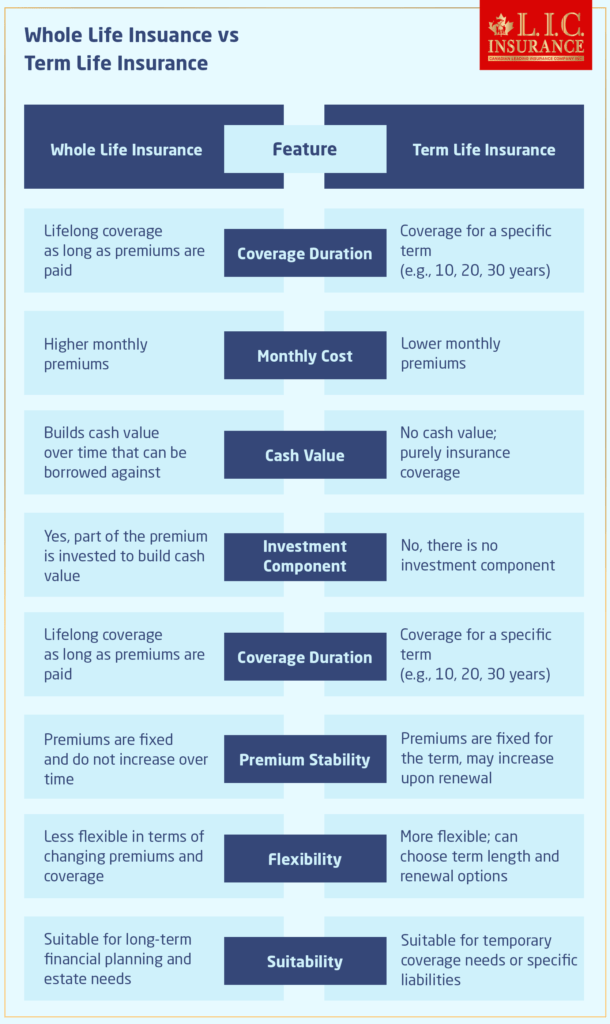What Can You Not Do with a Visitor Visa?
By Canadian LIC, March 13, 2024, 8 Minutes

Have you ever been confused by the limitations that come with your Visitor Visa and wished there was an explanation that was made just for you? Well, this blog will clear up all your confusion. This detailed blog is meant to clear up any confusion about what you can and cannot do in Canada with a visitor’s visa so you can make the most of your time there without breaking the law. We know how hard it is to deal with visa restrictions. Our aim is to offer you solutions that resonate with your day-to-day challenges, making your life easier and your stay in Canada more enjoyable.
Understanding the Visitor Visa
A Canadian Visitor Visa, or a Temporary Resident Visa (TRV), is granted to individuals who wish to enter Canada for a temporary period, whether for tourism, visiting family, or conducting certain business activities. While it opens the door to Canada’s beautiful landscapes and vibrant cities, it comes with its set of limitations. Knowing these restrictions is essential to ensure compliance with Canadian immigration laws and to avoid any unintended violations that could impact your ability to visit Canada in the future.
Activities Prohibited on a Visitor Visa
- Employment in Canada: One of the most significant restrictions of a Visitor Visa is the prohibition on engaging in employment in Canada. Visitors are not allowed to enter the Canadian job market or receive compensation from a Canadian source. This rule is in place to protect the local labor market and ensure that visitors refrain from taking jobs from Canadian citizens or permanent residents.
- Enrollment in Educational Institutions: While short-term courses may be permissible, enrolling in a long-term educational program is not allowed on a Visitor Visa. If your goal is to study in Canada, obtaining a study permit is essential. This ensures that international students contribute to the educational environment without impacting opportunities for Canadian students.
- Permanent Residence Intent: A Visitor Visa is strictly temporary, and expressing intentions to stay in Canada permanently can lead to refusal at the port of entry. Your stay must be temporary, with clear intentions to return to your home country after your visit.
- Healthcare Employment and Services: Working in healthcare settings or providing healthcare services to Canadians is not permitted on a Visitor Visa. This includes volunteering in healthcare facilities or providing care as a nanny or caregiver without the proper authorization and visa.
Understanding Healthcare and Insurance Needs
Venturing into Canada, with its expansive landscapes and bustling cities, is an exciting journey. However, understanding the healthcare system and ensuring you have adequate coverage during your stay is crucial. Canada’s healthcare system is celebrated for its comprehensiveness among citizens and permanent residents. Yet, as a visitor, the scenario changes significantly. You may find yourself ineligible for provincial health coverage, spotlighting the importance of Visitor Health Insurance Plans. Let’s dive deeper into navigating these waters, especially for those for whom English is a second language. Our aim is to simplify, inform, and connect you with the solutions to common insurance struggles faced by visitors in Canada.
Understanding Canada’s Healthcare System
Canada is a great place to travel because it has both expansive scenery and busy towns. But it’s very important to know how the healthcare system works and make sure you have enough coverage during your stay. People from all over the world praise Canada’s healthcare system for being able to cover all of its citizens and permanent residents. But things are very different when you’re a guest. You might not be able to get health insurance through the province, which shows how important Visitor Health Insurance Plans are. Let’s talk more about how to get around these areas. Our aim is to simplify, inform, and connect you with the solutions to common insurance struggles faced by visitors in Canada.
The Importance of Visitor Health Insurance Plans
What if you are on vacation in Whistler’s snowy peaks or Quebec City’s old streets, and you suddenly have to deal with a medical emergency? Without insurance, the cost of treatment might be excessively costly, turning an adventure into a financial burden. This is where getting a Visitor Insurance Quote before your trip becomes very important, offering you mental peace as you explore Canada.
How Visitor Health Insurance Works
Visitor Health Insurance Plans offer coverage for unforeseen medical expenses. This includes emergency medical treatments, hospital stays, and in some cases, prescription drugs and dental emergencies. The idea is to protect you from the significant costs associated with unexpected medical needs, ensuring that a health issue does not escalate into a financial crisis during your visit.
Getting a quote for Visitor Insurance
The first thing you should do to make sure you’re covered is get a Visitor Insurance Quote. It’s a good idea to look into and compare different Visitor Health Insurance Plans before you go on vacation. Find coverage that meets your needs by thinking about how long you plan to stay, your health, and the things you want to do. An effective plan should cover a range of medical services, including hospitalization, emergency services, and repatriation, should you need to return home for treatment.
Common Struggles and Solutions
One common struggle visitors face is understanding the terms and conditions of insurance policies. Insurance language can be complex, and to overcome this, you must seek assistance from insurance providers who can explain the terms easily. Another challenge is estimating the amount of coverage needed. Too little coverage can leave you vulnerable, while too much may unnecessarily increase costs. Consulting with insurance experts or using online calculators provided by insurance companies can help you make an appropriate choice.
Interactive and Engaging Solutions
For a more interactive approach, some insurance providers offer online chat support, where you can ask questions and receive immediate answers. Engaging with these services can provide clarity and help you choose the right plan. Additionally, look for providers that offer flexible plans, allowing you to adjust your coverage as your travel plans evolve.
Why Is Visitor Insurance Important?
It’s fun to go to Canada! But let’s say you trip on ice or get sick in the middle of the forest. You might have to pay a lot for doctors and hospitals if you don’t have insurance. Getting an insurance quote before you travel means you can relax and enjoy Canada without worrying about surprise doctor bills.
Keep yourself safe with Visitor Insurance
You’re walking through a lovely park in Quebec, Canada, admiring the old buildings, when all of a sudden, you trip and hurt your arm. Or, think about watching whales near Vancouver Island when you start feeling very sick from the boat moving. These are times when having Visitor Insurance is very important. So you don’t have to worry about spending a lot of money if you get hurt or sick. With this insurance, you can enjoy your trip to Canada without stress.
What Does Visitor Insurance Cover?
Visitor Insurance helps if you have an accident or get sick. It can pay for you to go to the hospital, get medicine, or even return home if you need to because of your health. The main idea is to protect you from big bills if something unexpected happens. Looking at different insurance quotes helps you see what help you can get and how much it will cost.
Real Stories Make It Clear
Let’s talk about Ana from Brazil. She wanted to see Canada in the winter and got insurance before her trip. She had a small accident while skiing but didn’t have to worry about the cost because her insurance covered it. This story shows how useful insurance is. It’s there to help, so you don’t have to worry about money if you need a doctor.
Talking to Your Insurance Company Helps
Talking with your insurance company is essential. They can explain what your insurance does and doesn’t cover. Asking questions and understanding your insurance makes it more valuable. Knowing how to tell them if you need help because of an accident or sickness is good. This makes you feel more secure.
Choosing the Right Insurance Plan
When selecting a Visitor Health Insurance plan, consider factors like coverage limits, deductibles, and exclusions. Ensure the plan covers repatriation in case you need to return to your home country for medical care. Comparing Visitor Insurance Quotes from different providers will help you find a plan that works well with your needs and budget.
Compliance and Peace of Mind
Adhering to the conditions of your Visitor Visa and understanding your insurance coverage is the basis for a worry-free stay in Canada. While the restrictions may seem to limit, they are in place to ensure visitors’ and residents’ safety and well-being. By respecting these limitations and preparing for your healthcare needs, you can focus on experiencing Canada’s diverse culture, breathtaking landscapes, and warm hospitality.
Find Out: Everything about Visitor Insurance
Get The Best Insurance Quote From Canadian L.I.C
Call 1 844-542-4678 to speak to our advisors.

To Sum It All Up
If you have a Visitor Visa and want to visit Canada, you can do a lot of fun things, but you need to make sure you follow the rules set by Canadian immigration laws. Knowing what you can’t do with a Visitor Visa and getting the right Visitor Health Insurance Plans will not only keep you safe, but they will also make sure that your trip is fun and doesn’t cause any problems. This knowledge empowers you to make informed decisions, leading to a more fulfilling and stress-free visit. Your adventures in Canada await, and now you’re equipped with the insights to make every moment count safely and responsibly.
Faq's
Let’s suppose you’re exploring the beautiful landscapes of Canada, and suddenly, you need medical attention due to an unexpected accident or illness. The cost of healthcare can be very high for visitors. Having Visitor Health Insurance helps cover these unexpected medical expenses, ensuring you don’t face a financial burden during your stay. It’s like having a protective barrier around you in case you trip and fall.
Obtaining a Visitor Insurance Quote is simpler than you might think when visiting Canada! Start by searching online for reputable insurance providers who offer plans designed for visitors to Canada. You’ll need to provide some basic information about your trip and yourself, such as your travel dates and age. Once submitted, you’ll receive a quote detailing the cost and coverage options. It’s like shopping online for a financial safety blanket that protects you.
When comparing Visitor Health Insurance Plans, consider what’s important for your safety and peace. Look at the coverage amount (how much the plan will pay for medical expenses), what medical services are covered (like hospital stays, doctor visits, and emergency medical care), and any exclusions (what’s not covered). Also, check the deductible, which is the amount you pay before the insurance starts paying.
Yes, you can buy Visitor Health Insurance after you enter Canada, but it’s not recommended. It’s better to purchase your insurance before you start your trip to ensure you’re covered right from the beginning. If you wait until you’re in Canada, there might be waiting periods before your coverage starts. Think of it as fixing a leak in your roof; it’s best done before the rain starts, not after your house is already wet.
Yes, some activities might be excluded from coverage under Visitor Health Insurance Plans, such as extreme sports or participating in professional sports events. It’s important to read your policy carefully and understand what activities are covered. If you plan on engaging in adventure sports, look for a plan that includes explicit coverage for these activities. It’s like wearing a helmet when biking; make sure it’s designed for the activity you’re doing.
To ensure your claim is accepted, follow the terms of your insurance policy closely. Keep all receipts and documents related to your medical care, report any incidents to your insurance provider as soon as possible, and submit all required paperwork promptly. It’s like baking a cake; follow the recipe closely, and you’ll get a good result.
Coverage while travelling outside Canada depends on your specific insurance policy. Some plans offer worldwide coverage, while others might limit coverage to Canada. Before planning trips to other countries, check your policy or speak with an insurance expert to understand where you’re covered. It’s like checking the weather before a day out; knowing what to expect helps you prepare better.
No, a Visitor Visa does not permit you to work in Canada. It is meant for those visiting Canada temporarily for tourism, family visits, or business meetings that do not involve entering the Canadian labour market. If you wish to work in Canada, you should apply for a valid work permit.
While a Visitor Visa cannot be “converted” to a super visa, you can apply for a super visa if you meet the eligibility criteria, primarily being a parent or grandparent of a Canadian citizen or permanent resident. The super visa allows for a longer stay compared to a regular Visitor Visa. You would need to apply for a super visa separately and meet all the requirements, including having a Visitor Health Insurance plan from a Canadian insurance company.
It’s best to apply for your Visitor Visa at least a few months before your planned travel date. Processing times can vary based on the country you’re applying from, the volume of applications, and your personal situation. Applying well in advance will help avoid delays affecting your travel plans.
Visitor Visa processing times can vary widely due to several factors, including your case’s complexity, your application’s completeness, and the Canadian visa office’s workload. High volumes of applications, especially during peak travel seasons, can also lead to delays. If you’ve provided a Visitor Insurance Quote or plans with your application, ensure all information is accurate and complete to avoid additional delays.
Yes, a super visa is a type of Visitor Visa specifically for parents and grandparents of Canadian citizens or permanent residents. It allows for longer visits, up to five years at a time, without the need to renew your status, and is valid for up to 10 years. Like other visitors, super visa applicants must have a valid Visitor Health Insurance plan during their stay in Canada.
Visitor Visas can be rejected for several reasons, including insufficient evidence of ties to your home country, incomplete application forms, unclear purpose of visit, or lack of financial resources to support your stay in Canada. Providing a comprehensive Visitor Insurance Quote or evidence of health insurance plans may address concerns about your financial resources for a visit but won’t guarantee visa approval if other requirements aren’t met.
No, a Visitor Visa and a Temporary Resident Permit (TRP) serve different purposes. A Visitor Visa allows you to travel to Canada for temporary reasons, like tourism or business. A TRP is issued to individuals who are otherwise inadmissible to Canada due to criminality or other reasons but have a justifiable reason to be in the country. TRPs are granted at the discretion of Canadian immigration authorities.
Visitors to Canada for less than six months usually do not require a medical examination. However, if you plan to stay longer, have lived in certain countries for an extended period, or will work in close contact with people, you might need to undergo a medical exam. This ensures public health and safety and does not typically impact the need for Visitor Health Insurance Plans.
Yes, you can leave Canada and re-enter as long as your Visitor Visa and passport are still valid. Keep in mind that each time you re-enter, you must prove to the Canadian Border Services Agency (CBSA) that your visit is temporary and that you will leave Canada by your visa’s expiry date. Carrying evidence of your Visitor Health Insurance can help demonstrate your preparedness for the stay.
By understanding these FAQs and applying the knowledge to your travel preparations, you can ensure a safer and more enjoyable visit to Canada. Remember, Visitor Health Insurance is not just a requirement; it’s a smart way to protect yourself and your travel investment.
The above information is only meant to be informative. It comes from Canadian LIC’s own opinions, which can change at any time. This material is not meant to be financial or legal advice, and it should not be interpreted as such. If someone decides to act on the information on this page, Canadian LIC is not responsible for what happens. Every attempt is made to provide accurate and up-to-date information on Canadian LIC. Some of the terms, conditions, limitations, exclusions, termination, and other parts of the policies mentioned above may not be included, which may be important to the policy choice. For full details, please refer to the actual policy documents. If there is any disagreement, the language in the actual policy documents will be used. All rights reserved.
Please let us know if there is anything that should be updated, removed, or corrected from this article. Send an email to [email protected] or [email protected]







